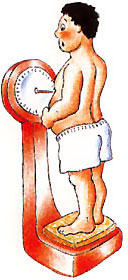Taking Good Care of your Legs
Why worry about varicose veins?
Apart from being unsightly, varicose veins can cause great discomfort, and even pain, Left untreated, they can lead to secondary damage which could permanently affect your health - but as this leaflet explains, there are a few simple precautions you can take.
What are varicose veins?
Varicose veins are veins which are swollen, and often crooked and distorted. Usually blue or purple in colour, they are most commonly found in the leg, not far below the skin.
They occur when there is a weakness in either the valves or the walls of the vein, and this prevents the blood circulation system from working properly. The blood flow slows down and collect in the veins, stretching the thin walls further out of shape, and the surrounding tissue becomes painfully congested and inflamed.
Who get varicose veins?
There are about 6 million sufferers in the UK. The condition affects far more women than men, often beginning during pregnancy. People with sedentary jobs are more likely to suffer, especially in later life.
What are the warning signs?
Early symptoms include swollen ankles, swollen veins and heaviness and tiredness in the legs, often accompanied by anything from a light tickling sensation to aches, cramps or stabbing pains in the calves. If you suffer from any of these, consult your doctor as soon as possible.
What causes varicose veins?

Standing or sitting still for long periods puts stress on leg vein because your muscles aren't helping to pump blood back to the heart.
Being overweight puts more strain a n on the legs and more pressure on the blood system.
Smoking increases the risk of damaged veins by raising your blood pressure.

Being pregnant can restrict the bloodflow to the legs - and the extra weight causes more stress, especially in the later stages.
A bad diet with too many fatty foods causes damage by gradually clogging up your arteries and veins.

Getting older reduces the efficiency of your circulation system generally, making you more prone to varicose veins.
Heredity can also be a factor. Like ageing, this is something you can do nothing about but that's all the more reason to take precautions.
How can you prevent varicose veins?
DO:
- Move your legs and feet around if you have to stand or sit for long periods every day as these small movements allow your calf muscles to assist the circulation in your legs.
- Keep fit. Walking and taking regular exercise keeps your circulation system healthy.
- Eat a balanced diet and watch your weight to avoid putting unnecessary strain on your heart.
- Moisturise your legs regularly because very dry skin can accelerate the formation of varicose veins.
- Put your feet up. Not having to pump blood upwards against gravity gives your circulation system a well-earned rest.
- Avoid knocks and grazes by protecting your legs if these are liable to occur.
- Start wearing graduated compression hosiery, which helps your body's natural blood circulation system.
- Sit with your legs crossed, as this can constrict blood flow.
- Wear stockings or socks with a tight band at the top, or a panty girdle that cuts into the thigh.
- Wear high heels all the time (or shoes that are too tight) as these restrict circulation.
- Expose your legs to excessive heat as this dilates the blood vessels.
- Avoid getting them sunburned or soaking them in very hot baths.

- Smoke, eat too many fatty foods or drink too much tea,
 coffee or alcohol as all these substances are bad for your blood pressure.
coffee or alcohol as all these substances are bad for your blood pressure.
Article Links
See other medical related articles:- About Futuro: Support Hosiery
- About Mediven Compression Stockings
- About T.E.D. Anti-embolism Stockings
- Compression Classes for Graduated Compression Hosiery
- Prevention of Deep Vein Thrombosis (DVT)
- Skin Breakdown and TED Stockings
- Taking good care of your legs
- TED Stockings: Proven DVT reduction through published peer reviewed clinical studies
- Tips and Tricks for Healthy Legs
- Veins of the Leg
- When a blood clot forms in the leg ... (.jpg, 119Kb) The Sunday Times, 30 December 2001
- CE Marking (European Medical Device Directive 93/42/CEE)












